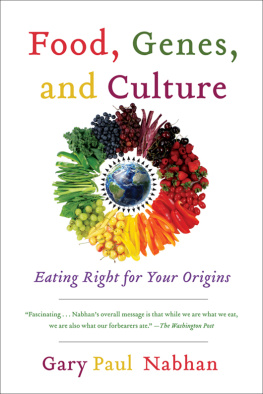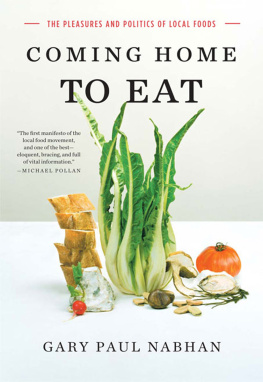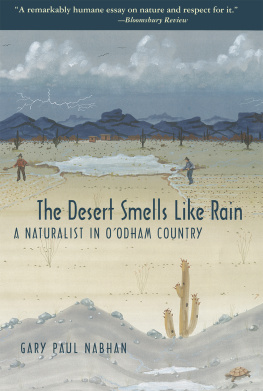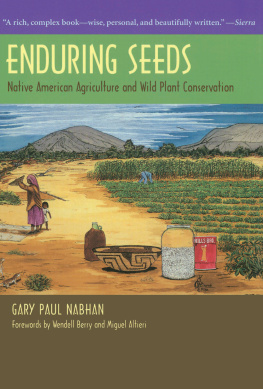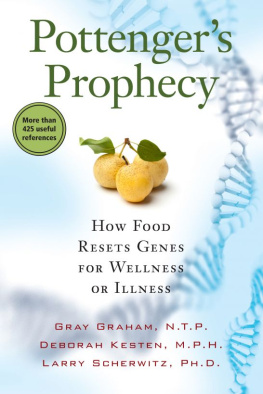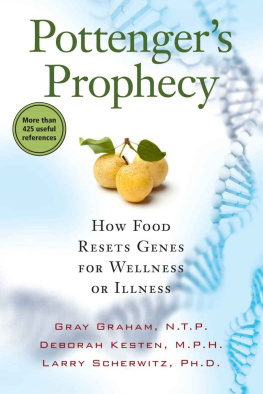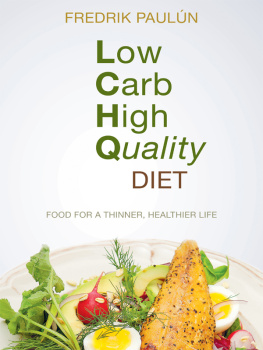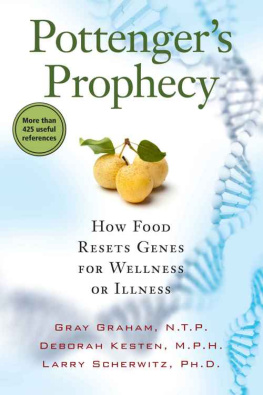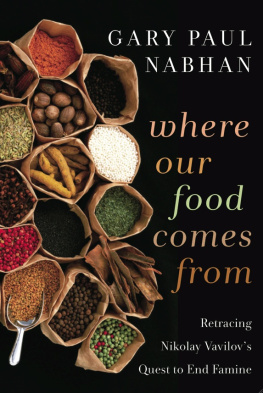FOOD, GENES, AND CULTURE
EATING RIGHT FOR YOUR ORIGINS
Gary Paul Nabhan

Copyright 2004 and 2013 Gary Paul Nabhan
All rights reserved under International and Pan-American Copyright Conventions. No part of this book may be reproduced in any form or by any means without permission in writing from the publisher: Island Press, 2000 M Street, NW, Suite 650, Washington, DC 20036.
Island Press is a trademark of Island Press/The Center for Resource Economics.
Library of Congress Cataloging-in-Publication Data
Nabhan, Gary Paul.
Food, genes, and culture : eating right for your origins / Gary Paul Nabhan.
pages cm
Includes bibliographical references and index.
ISBN 978-1-61091-492-5 (pbk.) -- ISBN 1-61091-492-9 (paper) 1. Nutrition--Genetic aspects. 2. Food habits--History. 3. Human evolution. 4. Physical anthropology. I. Title.
QP144.G45N33 2013
612.3--dc23
2013023650
British Cataloguing-in-Publication data available.
Printed on recycled, acid-free paper 
Design by Kathleen Szawiola
Manufactured in the United States of America
10 9 8 7 6 5 4 3 2 1
Now killin folks and cookin aint so very far apart.
HERBERT H. KNIBBS
from his poem/song Boomer Johnson

Dedicated to the memory of Ted Nabhan,
Sally Giff Pablo, and Gabriel Williams
CONTENTS
ONE |
TWO |
Did Mitochondrial Eve and Java Man Feast on the Same Foods? |
THREE |
FOUR |
FIVE |
Is It a Matter of Taste? |
SIX |
Should We Change Places, Diets, or Genes? |
SEVEN |
Why Diabetes Is So Common Among Desert Dwellers |
EIGHT |
How Hawaiians Are Curing Themselves |
FOREWORD
IF THERE IS A MORAL to this story it is that we ignore the interactions among our genes, our ancestral and contemporary diets, and our environments (including their myriad microbes) at our own peril. But if there is hope in this same story, it is that once we open our eyes, mouths, and taste buds to these fascinating interactions, our world will be made richer and many problems can be averted.
What kinds of problems? For starters, the human suffering triggered by the onset of diabetes, heart disease, food allergies, and many forms of diet-driven inflammation. Over the long haul, we also need to check the decline of biodiversity which will impoverish us all, but particularly that of the place-based microbes in our food systems, from the bacteria in our gardens soils to those in our guts.
These diseases and degradations affect the quality of life of billions of people, yet they are often mislabeled if not misdiagnosed and attributed to the wrong causes. Take adult-onset or non-insulin dependent diabetes, for example, which medical researchers have treated either as a genetically determined disease or a nutritional disease of Western civilization, rather than as the result of mismatches between genes, environment, and diet. Since the first edition of this book was published, the number of Americans living with diabetes has grown to an estimated 22.3 millionabout 7% of the U.S. population. That marks an increase of nearly five million or 22 percent from 2007 to 2012 and, according to the American Diabetes Association, translates to $245 billion of medical costs. If no change in our perspective on this disease occurs by 2030, Americans might pay as much as $1.3 trillion annually for its treatment. Already, the collateral damage generated by our unhealthy food system means that one in every four dollars spent on hospital care in America is spent on diabetes, and one in every ten dollars spent on health care in general is spent on this same disease of gene-food-environment dysfunctions. What if just $50 million a year were dedicated to redesigning the food production, processing, and preparation system that is making our citizens sick in the first place?
But just why have we witnessed such astronomical growth in diabetes and other diseases during our own lifetimes? While many have suspected that there is a tangible link between this disease and nutrition, we have not yet dealt with its root causes. As a result, 95% percent of U.S. cases of diabetes are clearly triggered by diet changes that result in the non-insulin-dependent diabetes mellitus (NIDDM) form of this disease. Most experts point to the rise in consumption of high-fructose sugars, but whats painfully absent from the discussion is the connection between health and food, mediated by our genes, culture, and environment. Most geneticists once understood that any expression of certain diseases in plants or animals resulted from at least three factors: genes, environment, and gene-environment interactions. Today we can also include the epigenetic consequences of microbial (biotic) and climatic (abiotic) influences.
Where I live in Arizona, among many diverse Native and Hispanic American populations that suffer the highest incidences of diabetes anywhere in the country, we are headed toward a nutritional cliff that is also a true fiscal cliff. Diabetes care in my state has jumped from $.5 billion in 1995 to $3 billion in 2005, to at least $4.4 billion by the end of 2013. To put that in perspective, for every $20 dollars of food grown in Arizona, at least one dollar goes to treating diabetes sufferers.
If diabetes were the only problem, perhaps such bad news could be swept under the rug. But instead, Americans are now suffering from what Moises Velasquez-Manoff has called an epidemic of absence that can explain most of the meteoric rises not only in adult-onset diabetes, but in allergies, auto-immune diseases, and inflammatory diseases such as colitis that have occurred over the last half century. Yet the well-documented interactions among human genes, gut microbes, place-based foods, and diseases have barely changed the way most Americans think about our food choices. Sadly, even influential American food writers such as Michael Pollan and Marian Nestle fail to feature topics such as dietary diversity and human genetic diversity in their prescriptive food rules; for them, it is enough merely to get Americans to count good and bad calories, let alone worry about the food-microbe-gene interactions which affect how most of us respond to those calories.
Societies outside North America and Western Europe appear more cognizant of the connections between food, cultural heritage, and place than we are. The release of the first edition of this book stimulated far more public discussion abroad than in the U.S. In Italy, it was discussed in more than fifty papers, on several television stations, and in Slow Food circles. In Mexico, the national Fondo de Cultura Econmica selected it in 2006 as the book on science and society from elsewhere in the world to be translated into Spanish. The difference in reception says less about the book itself than about its readers: in Italy and Mexico, most residents both emotionally identify with and intellectually understand deeply historic food traditions. In much of the United States, our citizenry has become so placeless that I once heard a young Slow Food USA employee ask whether we even had heritage foods linked to our own landscapes and communities in North America! And since in America, many consider ourselves mutts or genetic hybrids of mixed ancestry, few fathom that our own unique sets of genes may be interacting with particular foods *(or the lack of them) in ways which profoundly influence health.

